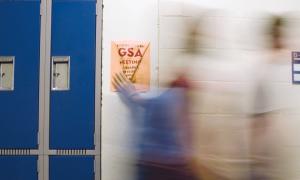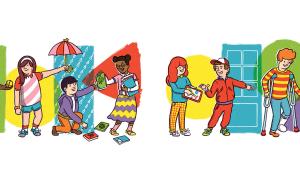article
2,889 Results
article
'THIS is Why We Need a GSA'

Gay-straight alliances are taking hold in middle schools, where homophobia and anti-gay harassment may be the most rampant.
article
The Age of Ubuntu
The editor of Teaching Tolerance reflects on social change in South Africa.
article
article
Theories of Harmony
The editor of Teaching Tolerance writes on music education.
article
Saying ‘Thank You’ to All the Ms. Sandras
Every school day just after 2 p.m., Sandra pushes her cart into my classroom to clean the bathroom and empty the trash cans. She is the school custodian and my students love her. When students hear her squeaky wheels in the hallway outside our door, they listen for her kind giggle as she enters the room. "Ms. Sandra! Ms. Sandra! Can I help you empty the trash? Can I help you?" they yell out with their hands waving in the air.
professional development
Suggested Answers
Themes in Focus Answers will vary. These are suggested answers to questions on page 8. Click here for the PDF version of this page. Courage and Empathy 1. What did Jamie and his lawyers hope to accomplish by filing a
August 13, 2010
article
When “Have A Nice Day” is Considered Weird
It’s not that hard to stick out in middle school. The unspoken code of social conduct is unyielding and inflexible. Anything outside of those narrow parameters is weird, and weird makes kids uncomfortable.
article
Am I My Brother’s Keeper?
It is not easy for my students in suburban St. Louis to connect with the characters in John Steinbeck’s Of Mice and Men. The novel is packed with gruff men. Middle aged, mostly friendless, they are all struggling to eke out an income on a ranch somewhere in California. The one glimmer of hope in Steinbeck’s classic emerges through the relationship between two men—George and Lennie. They are not relatives. Yet in a society where individualism is paramount, George does far more than merely put up with Lennie. He cares for this mentally challenged man, blankets him with a protective shield. Other characters turn from, threaten, and even belittle Lennie. Most are astounded by George’s choice to attend to someone who seems like such a burden.
article
Bringing 9/11 in the Classroom—Useful Lessons
As a matter of practice, we encourage teachers to integrate learning opportunities about religious tolerance and cultural understanding throughout the school year. But this is especially important as the 10th anniversary of 9/11 approaches.
